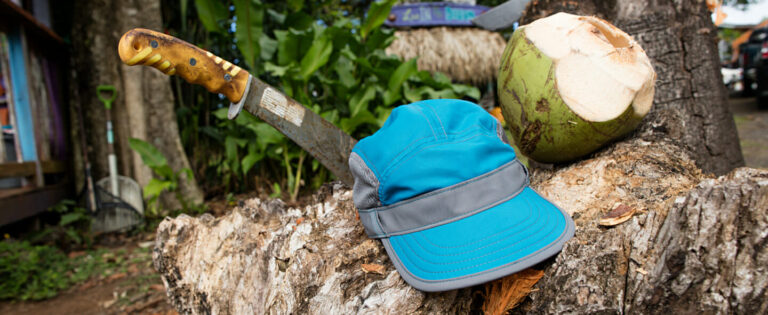Chalk has been an integral part of virtually every climber and boulderer’s gear for decades. Credited with introducing chalk to the world of rock climbing is the American climber and gymnast John Gill, who is now considered to be one of the most important figures in the early history of bouldering. As we all know, magnesium carbonate is used widely in gymnastics, particularly for ring and bar exercises, to keep the gymnast’s hands drier in order to improve their overall grip on the various apparatuses.
Seeing climbing as an extension of gymnastics, Gill took this idea and ran with it – or rather, climbed with it. He chalked up with his gymnastic chalk and started to climb. The result? You guessed it: a dramatic improvement in his grip on slick climbing holds. Because his idea worked so well and Gill turned out to be such a great boulderer, chalk eventually became just as important to climbers as it had been to gymnasts for years before. Today, chalk is so ubiquitous in the climbing world that you’d be hard-pressed to find a climber or boulderer who doesn’t use chalk and a chalk bag.
What is chalk, anyway?
Technically speaking, what we climbers now know as chalk is magnesium carbonate. It’s also known as MgCO3. For gymnasts, however, talcum is mixed with the magnesium carbonate to allow for more slippage on the apparatuses. Climbers, of course, would prefer not to slip, so it is important for the chalk to be more or less pure. In addition to its application in climbing, the natural substance known as magnesite is also used for foodstuff, medicines, building materials and a variety of other things. Depending on the manufacturer, there are different formulations, each of which has a dedicated following among climbers. In other words, each type of chalk has something unique about it that one climber will love and another might hate. For instance, one climber may love Black Diamond chalk, while another may prefer chalk made by Metolius.
Even though there may be some argument over which chalk is better, there’s certainly no arguing over chalk’s effect or application. By rubbing the magnesium carbonate on your hands and fingers, you’ll have nice and dry hands to climb with. The powder basically soaks up the sweat on your fingers and improves your grip on holds, preventing you from slipping off.
Loose chalk, block chalk, a chalk ball or liquid chalk?
Since many beginning climbers seem to be overwhelmed by the huge selection of chalk available on the market today, we’re going to give you a brief overview of the different types of chalk:
- Loose chalk
Available in a variety of different textures from fine to coarse, loose chalk can be purchased in bags or other containers. To use it, all you have to do is fill up your chalk bag with it, but only about a quarter of the way. Otherwise, you wouldn’t be able to fit your hands in there comfortably! It’s always better to have to refill it instead of filling it to the brim. - The chalk ball
Chalk balls are incredibly popular and easy to use. If you’re unfamiliar with them, they’re just mesh balls with pores designed to contain the chalk until you want to use it. They are available in a variety of sizes (make sure to check the amount of chalk and the diameter before buying). It should fit well in your hand. So, if you have big hands, you should get a big chalk ball and for smaller hands a small ball. Simple right? To chalk up, all you have to do is squeeze and knead the ball, as you would dough, and your hands will be covered with chalk. - Block chalk
Chalk is also available in blocks or chunks that a climber can crush or break up into smaller chunks. - Liquid chalk
Liquid chalk is made from alcohol with magnesium carbonate mixed in. To apply it, all you have to do is squirt a couple of drops onto your palms and fingers, rub it in and you’ll have a chalky residue covering your hands straight away.
If you’re looking for a recommendation, there’s really no clear-cut winner. Everybody has their own personal preference. The regular old powder is very popular, efficient and easy to use. However, loose chalk does produce quite a bit of chalk dust, especially when you French blow (blow the excess chalk off your hands). When you’re at the crag, it’s not that big a deal, but doing it in the climbing hall could be problematic. Inhaling all that chalk dust can’t be good! Liquid chalk is perfect for short climbing routes and boulders. For longer climbs, this kind of chalk is less suitable, since you can’t just plunge your hands in your chalk bag to reapply it. For beginners, chalk balls are certainly a good choice. They’re easy to use and great for both climbing indoors and outdoors. How long a chalk ball will last depends on how much you climb and therefore how often you use it. But, seeing as chalk balls limit the amount of chalk you can pat onto your hands, an average sized ball used on a regular basis can last for several routes before it has to be replaced.
Chalk bags – those stylish bags that hold your chalk
The chalk bags climbers wear on their harness are used for carrying their chalk and chalking up on their way up the wall. These bags usually have integrated drawstrings to close them and a cord or strap to attach it to your harness. The important thing here is that you can reach the chalk bag from both sides, since you can hardly plunge both hands into your bag at once! As for their features, chalk bags often have a fleece lining to help keep the chalk inside the bag and distribute it evenly on your hands. Plus, the rim of the opening is usually stiff so that it won’t close on you when you need to chalk up.
It’s hard to say which bag is the best. As with chalk, every climber has their own personal preference when it comes to chalk bags as well. Many brands offer chalk bags in different sizes, with some being much deeper and others much wider. In spite of all the variety, you should choose a chalk bag that is suitable for the size of your hands. It shouldn’t be too big or too small. After all, you want to be able to move your hand around in there or get a good grip on your chalk ball. All practical aspects aside, chalk bags are an expression of your own individual style and an integral part of every climber’s gear. There are even hand-made chalk bags you can buy. Wildwexel, for example, makes beautiful one-of-a-kind bags that are bound to turn some heads, no matter where you go climbing.







